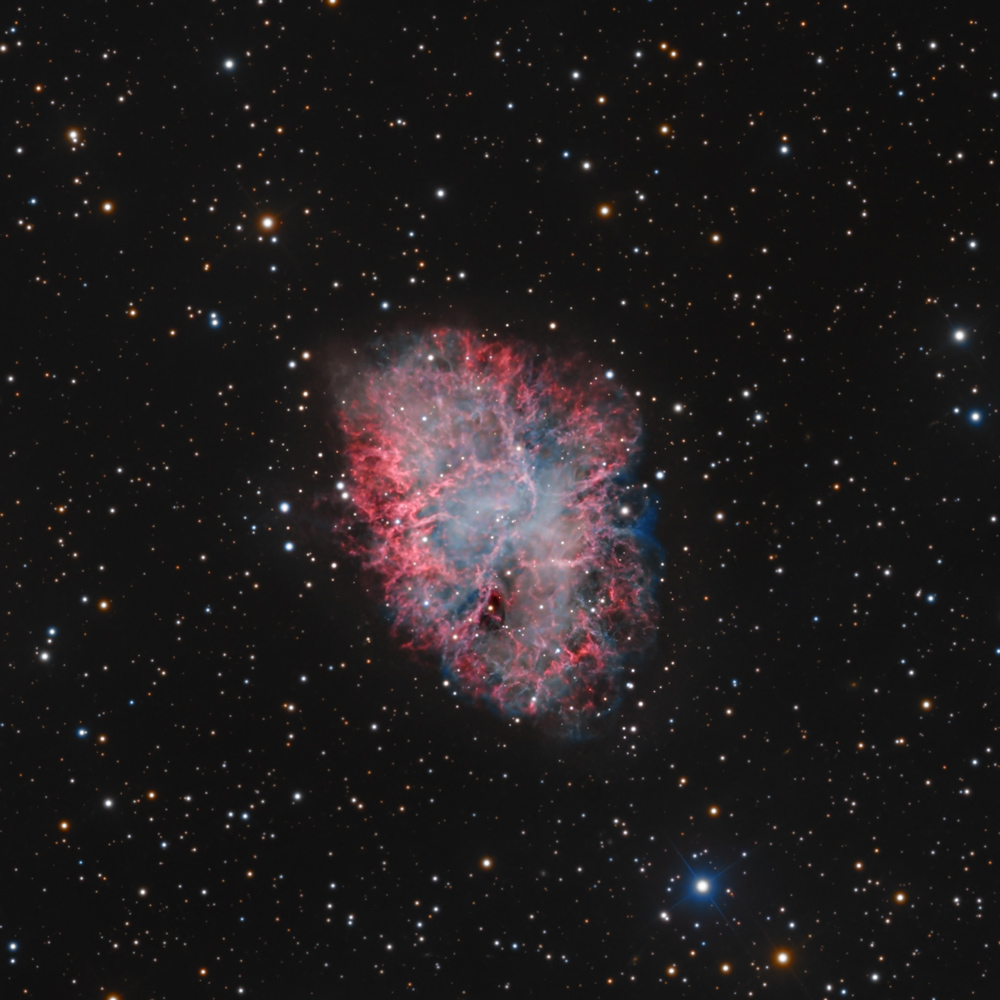
M1 is a gas cloud which is the remnant of a huge star which exploded into a supernova, the light from which reached us in the year 1054 A.D. The original star, with
perhaps ten times the mass of our Sun, remains at the center of this nebula, but it now contains perhaps 1.5 times the mass of our Sun, and has collapsed into a neutron star, with a diameter of
ten miles, which rotates on its axis 30 times per second. The outer layer of gas is expanding at a rate of about 3 million miles per hour. It is about 6,500 light years from the Sun. At that
distance, it is about 12 light years across (giving a little bit of evidence of the power of a supernova explosion, pushing matter six light years away in only 1000 years).
An interesting phenomenon that this image shows is the shockwave created by the rapidly-spinning neutron star (a pulsar wind nebula) at
the center of the nebula. In the image below, the pulsar wind nebula is manifested in the two curved bright arcs above and below the two bright stars at the center of the image; this little image is a
crop of the center of the full image.

This is the second time I have imaged this striking object; the first was twenty years earlier, from my yard. To see what better location (darker skies; less turbulent skies), better equipment,
and more skill (and, yes, better software) can do, compare this image to that effort.
Copyright 2022, 2023, 2024 Mark de Regt